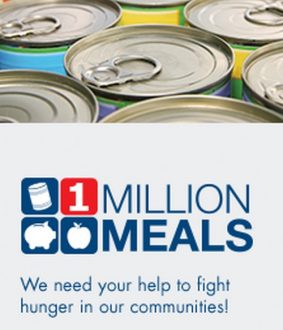
Arvest Bank has launched its seventh annual 1 Million Meals campaign challenging bank employees, customers and community members to join together to fight hunger in the more than 120 communities served by the bank in Arkansas Oklahoma, Missouri and Kansas. Arvest Marketing Director Tiffany Watkins says the initiative is needed, as Arkansas ranks fifth among the most food-insecure states in the nation, according to the United States Department of Agriculture.Arvest kicked off the two-month, bank-wide effort to provide at least one million meals to local, hungry families, and it will continue through June 2nd. The initiative will conclude later that month, when donations are presented to more than 75 locally selected organizations feeding the hungry in their communities.
Baxter and Marion county residents can participate in the 1 Million Meals campaign by dropping off nonperishable food items or making monetary donations at any of the Arvest branches in Mountain Home, Flippin, Bull Shoals, Yellville and Lead Hill, or by calling (866) 952-9523. Arvest credit card customers can also donate Arvest Flex Rewards points by visiting arvestflexrewards.com and clicking on the 1 Million Meals banner.
According to Watkins, this year the local food and monetary donations will again go to the Food Bank of North Central Arkansas and their member food agencies in Baxter and Marion counties, which includes food pantries and other programs.
Listen:
The 1 Million Meals campaign is open to the entire community, not just Arvest Bank customers.
Arvest is conducting its annual initiative in the spring for the third consecutive year due to the fact food banks report an increased need for food items in the summer, when many children do not have the benefit of eating meals at the schools they attend. According to the Food Research and Action Center, for example, only one out of seven children who ate a free or reduced-priced school lunch during the 2015-2016 school year was reached by the Summer Nutrition Programs in July 2016.
Donations to food banks also tend to be lower in the spring and summer than at other times of the year.
WebReadyTM Powered by WireReady® NSI










